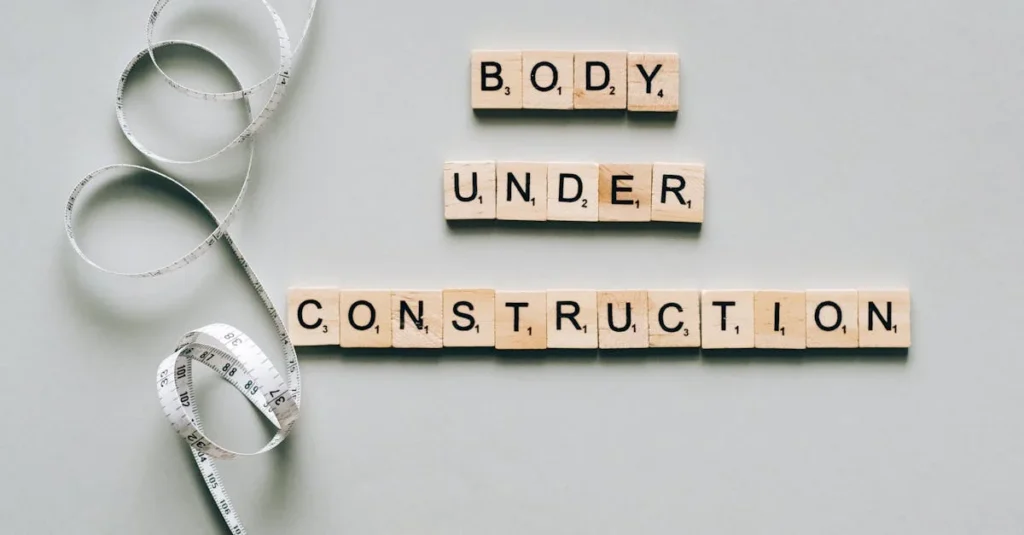
Have you ever embarked on a weight loss journey, only to find yourself feeling overwhelmed and unsure of where to begin? You’re not alone. Many individuals struggle to achieve their desired weight, often due to a lack of clear direction and measurable objectives. However, there’s good news: by harnessing the power of goal setting, you can significantly enhance your chances of success. This comprehensive guide will explore how focusing our efforts through strategic goal setting can dramatically improve weight loss outcomes, providing you with the tools and knowledge to transform your health and wellbeing.
The Science Behind Goal Setting and Weight Loss
Goal setting is more than just a motivational technique; it’s a scientifically-backed approach to achieving desired outcomes. When it comes to weight loss, setting clear, specific goals can make a world of difference in your journey towards a healthier you.
Research has consistently shown that individuals who set well-defined goals are more likely to succeed in their weight loss endeavours. A study published in the Journal of Human Nutrition and Dietetics found that participants who set higher weight loss targets achieved greater long-term weight reductions compared to those with more modest goals.
But why is goal setting so effective? The answer lies in our brain’s response to clearly defined objectives. When we set specific goals, our mind becomes focused and motivated, leading to increased effort and persistence. This psychological boost can be the difference between giving up when faced with challenges and pushing through to achieve lasting results.
Moreover, goal setting provides a framework for measuring progress. By establishing concrete milestones, you can track your journey, celebrate small victories, and make necessary adjustments along the way. This continuous feedback loop not only keeps you motivated but also helps you refine your approach for optimal success.
It’s important to note that not all goals are created equal. The most effective weight loss goals are those that are Specific, Measurable, Achievable, Relevant, and Time-bound (SMART). By adhering to these criteria, you can create a roadmap for success that is tailored to your unique circumstances and aspirations.
Understanding Different Types of Weight Loss Goals
When it comes to shedding pounds, it’s crucial to recognise that there are various types of goals you can set. Each type serves a different purpose and can contribute to your overall success in unique ways. Let’s explore the main categories of weight loss goals and how they can work together to create a comprehensive strategy for achieving your desired outcome.
Outcome Goals
Outcome goals focus on the end result you wish to achieve. For example, “I want to lose 10 kilograms in 3 months” is an outcome goal. These goals provide a clear target to work towards and can be highly motivating. However, it’s important to remember that outcome goals alone may not be sufficient, as they don’t outline the specific actions needed to reach your target.
Process Goals
Process goals, on the other hand, concentrate on the actions and behaviours required to achieve your desired outcome. Examples might include “I will exercise for 30 minutes, five days a week” or “I will prepare healthy meals at home four nights a week”. These goals are crucial because they focus on the habits and lifestyle changes necessary for sustainable weight loss.
Performance Goals
Performance goals bridge the gap between outcome and process goals. They focus on specific, measurable improvements in your abilities or behaviours. For instance, “I will increase my daily step count from 5,000 to 10,000 steps” or “I will reduce my daily calorie intake by 300 calories” are performance goals. These objectives help you track your progress and provide tangible evidence of your improvements over time.
By incorporating a mix of outcome, process, and performance goals into your weight loss strategy, you create a well-rounded approach that addresses both the big picture and the daily actions required for success. This multi-faceted goal-setting technique ensures that you’re not only working towards your ultimate weight loss target but also developing the habits and skills necessary for long-term health and wellbeing.
Setting Realistic and Achievable Weight Loss Goals
One of the most crucial aspects of successful goal setting for weight loss is ensuring that your objectives are both realistic and achievable. While it’s admirable to have ambitious aspirations, setting unrealistic goals can lead to frustration, disappointment, and ultimately, giving up on your weight loss journey altogether.
So, how can you determine what constitutes a realistic and achievable weight loss goal? Let’s explore some key considerations:
Consider Your Starting Point
Your current weight, body composition, and overall health status play a significant role in determining what’s realistic for you. Someone with a higher starting weight may be able to lose weight more quickly initially, while those closer to their ideal weight might experience slower progress. It’s essential to take these factors into account when setting your goals.
Assess Your Lifestyle and Commitments
Your daily routine, work schedule, family responsibilities, and other commitments can impact how much time and energy you can dedicate to your weight loss efforts. Be honest with yourself about what you can realistically commit to, and set goals that align with your lifestyle.
Consult with Healthcare Professionals
Before embarking on any significant weight loss journey, it’s wise to consult with your GP or a registered dietitian. These professionals can provide personalised advice based on your individual health status and help you set goals that are both safe and achievable.
Focus on Gradual, Sustainable Progress
While rapid weight loss might seem appealing, it’s often not sustainable in the long term. Aim for a steady, gradual weight loss of 0.5 to 1 kilogram per week. This approach is not only more achievable but also more likely to result in lasting changes.
Set Short-Term and Long-Term Goals
Break your overall weight loss objective into smaller, more manageable milestones. For example, if your long-term goal is to lose 20 kilograms, set short-term goals of losing 2-3 kilograms per month. This approach allows you to celebrate small victories along the way, keeping you motivated and engaged in the process.
Remember, the most effective weight loss goals are those that challenge you without being overwhelming. By setting realistic and achievable objectives, you set yourself up for success and create a positive momentum that can carry you through your entire weight loss journey.
The Role of Motivation in Goal Setting and Weight Loss
Motivation plays a pivotal role in the success of any weight loss endeavour. It’s the driving force that propels you towards your goals, even when faced with challenges or setbacks. Understanding the different types of motivation and how they impact your weight loss journey can help you harness this powerful tool more effectively.
Intrinsic vs. Extrinsic Motivation
Intrinsic motivation comes from within, driven by personal satisfaction, enjoyment, or alignment with your values. For example, you might be motivated to lose weight because you want to feel more energetic or improve your overall health. Extrinsic motivation, on the other hand, is driven by external factors such as rewards, recognition, or avoiding negative consequences. This could include wanting to lose weight to fit into a specific outfit or to receive compliments from others.
While both types of motivation can be effective, research suggests that intrinsic motivation tends to lead to more sustainable long-term results. When you’re intrinsically motivated, you’re more likely to persist in your efforts even when external rewards or pressures are absent.
Identifying Your ‘Why’
To tap into your intrinsic motivation, it’s crucial to identify your personal reasons for wanting to lose weight. Ask yourself:
- How will losing weight improve my quality of life?
- What activities or experiences will I be able to enjoy more fully at a healthier weight?
- How will reaching my weight loss goals align with my core values and long-term life aspirations?
By connecting your weight loss goals to deeply personal motivations, you create a powerful emotional drive that can sustain you through the ups and downs of your journey.
Cultivating Motivation Over Time
It’s important to recognise that motivation isn’t a constant state – it can fluctuate over time. Here are some strategies to help you maintain and cultivate motivation throughout your weight loss journey:
- Celebrate small victories: Acknowledge and reward yourself for reaching milestones along the way, no matter how small.
- Visualise success: Regularly imagine yourself achieving your weight loss goals and the positive impact it will have on your life.
- Surround yourself with support: Connect with like-minded individuals or join a support group to share experiences and encouragement.
- Track your progress: Keep a record of your achievements, both in terms of weight loss and non-scale victories like improved energy levels or better sleep quality.
- Remind yourself of your ‘why’: Regularly revisit your personal reasons for wanting to lose weight to reinforce your motivation.
By understanding the role of motivation in goal setting and actively working to cultivate and maintain it, you can create a powerful ally in your weight loss journey. Remember, motivation may ebb and flow, but with the right strategies and mindset, you can keep moving forward towards your goals.
Strategies for Effective Goal Implementation
Setting goals is just the first step in your weight loss journey. The real challenge lies in implementing these goals effectively and consistently. Here are some proven strategies to help you turn your weight loss aspirations into tangible results:
Create a Detailed Action Plan
Once you’ve established your goals, break them down into specific, actionable steps. For example, if your goal is to lose 10 kilograms in 3 months, your action plan might include:
- Planning and preparing healthy meals for the week every Sunday
- Exercising for 30 minutes, 5 days a week
- Tracking daily calorie intake using a mobile app
- Getting 7-8 hours of sleep each night
By outlining these concrete actions, you create a clear roadmap for achieving your goals.
Establish a Routine
Consistency is key when it comes to weight loss. Establish a daily or weekly routine that incorporates your goal-related activities. This might involve setting specific times for meals, workouts, and meal preparation. As these activities become habitual, they’ll require less conscious effort, making it easier to stick to your plan long-term.
Use Technology to Your Advantage
Leverage the power of technology to support your weight loss efforts. There are numerous apps and devices available that can help you track your food intake, monitor your physical activity, and even provide motivation and support. Choose tools that align with your goals and preferences, and integrate them into your daily routine.
Practice Mindfulness
Incorporating mindfulness techniques can enhance your ability to stick to your goals. This might include:
- Practicing mindful eating to become more aware of hunger and fullness cues
- Using meditation or deep breathing exercises to manage stress and emotional eating
- Regularly checking in with yourself to assess your progress and adjust your approach as needed
Anticipate and Plan for Obstacles
Identify potential challenges that might hinder your progress and develop strategies to overcome them. For example, if you know you struggle with late-night snacking, plan healthy alternatives or activities to distract yourself during those times. By anticipating obstacles, you’ll be better prepared to navigate them when they arise.
Seek Accountability
Share your goals with trusted friends, family members, or a support group. Having someone to check in with regularly can provide motivation and help you stay on track. You might also consider working with a personal trainer or nutritionist who can provide expert guidance and accountability.
Regularly Review and Adjust Your Goals
As you progress on your weight loss journey, it’s important to regularly assess your goals and make adjustments as needed. This might involve:
- Celebrating achievements and setting new, more challenging goals
- Modifying goals that no longer feel relevant or achievable
- Refining your action plan based on what’s working well and what’s not
Remember, effective goal implementation is an ongoing process. By employing these strategies and remaining flexible in your approach, you’ll be well-equipped to turn your weight loss goals into reality.
Tracking Progress and Measuring Success
Monitoring your progress is a crucial component of successful goal setting and achievement in your weight loss journey. By regularly assessing your advancement, you can stay motivated, identify areas for improvement, and make necessary adjustments to your approach. Here are some effective methods for tracking your progress and measuring success:
Regular Weigh-Ins
While the number on the scale shouldn’t be your only measure of success, regular weigh-ins can provide valuable data about your overall progress. Consider weighing yourself once a week, at the same time and under the same conditions (e.g., first thing in the morning, before eating or drinking). Remember that weight can fluctuate due to various factors, so focus on the overall trend rather than day-to-day changes.
Body Measurements
Taking body measurements can offer a more comprehensive view of your progress, especially as muscle gain can sometimes mask fat loss on the scale. Measure key areas such as your waist, hips, thighs, and arms every 2-4 weeks. Keep a record of these measurements to track changes over time.
Progress Photos
Visual evidence of your transformation can be incredibly motivating. Take photos of yourself from different angles (front, side, and back) every 4-6 weeks. Wear similar clothing and take the photos in the same lighting conditions for accurate comparisons.
Fitness Assessments
Regularly assess your fitness levels to track improvements in your physical capabilities. This might include:
- Recording the number of push-ups or sit-ups you can do in a minute
- Timing how long you can hold a plank position
- Measuring your running or walking speed over a set distance
Non-Scale Victories (NSVs)
Don’t forget to acknowledge and celebrate non-scale victories – improvements in your health and wellbeing that aren’t directly related to weight. These might include:
- Increased energy levels
- Better sleep quality
- Improved mood and mental clarity
- Clothes fitting more comfortably
- Reduced cravings for unhealthy foods
Keep a journal to record these NSVs and reflect on them regularly.
Food and Exercise Logs
Maintaining detailed records of your food intake and physical activity can help you identify patterns, ensure you’re staying on track with your goals, and make informed adjustments to your plan. Many smartphone apps can simplify this process, allowing you to easily log meals and workouts.
Regular Health Check-Ups
Schedule regular check-ups with your healthcare provider to monitor important health markers such as blood pressure, cholesterol levels, and blood sugar. Improvements in these areas can be significant indicators of your overall health progress, even if the scale hasn’t moved as much as you’d like.
Goal Achievement Tracking
Create a system to track your progress towards specific goals. This might involve a simple checklist, a goal-tracking app, or a visual representation like a progress bar or chart. Regularly updating this tracker can provide a sense of accomplishment and motivation to continue.
Remember, progress isn’t always linear, and it’s normal to experience plateaus or temporary setbacks. By employing a variety of tracking methods, you’ll gain a more holistic view of your progress and be better equipped to celebrate your successes, no matter how small they may seem.
Overcoming Challenges and Setbacks
Embarking on a weight loss journey is rarely a smooth, linear process. Challenges and setbacks are a normal part of the experience, and learning how to navigate these obstacles is crucial for long-term success. Here are some strategies to help you overcome common hurdles and stay on track with your weight loss goals:
Identify and Address Emotional Eating
Many people turn to food for comfort or stress relief, which can derail weight loss efforts. To combat emotional eating:
- Learn to recognise your emotional triggers
- Develop alternative coping mechanisms, such as deep breathing, meditation, or engaging in a hobby
- Seek support from a therapist or counsellor if emotional eating is a significant challenge for you
Deal with Plateaus
Weight loss plateaus, where your progress seems to stall despite your continued efforts, can be frustrating. To overcome plateaus:
- Reassess your calorie intake and adjust if necessary
- Vary your exercise routine to challenge your body in new ways
- Focus on non-scale victories to maintain motivation
- Consider consulting with a nutritionist or personal trainer for personalised advice
Navigate Social Situations and Temptations
Social events and dining out can present challenges to your weight loss goals. To handle these situations:
- Plan ahead by reviewing menus or bringing a healthy dish to share
- Practice mindful eating and portion control
- Don’t be afraid to communicate your goals and needs to friends and family
- Allow yourself occasional treats in moderation to avoid feeling deprived
Manage Time Constraints
Busy schedules can make it challenging to prioritise healthy habits. To overcome time constraints:
- Meal prep in advance to ensure healthy options are always available
- Incorporate short, high-intensity workouts when time is limited
- Look for opportunities to increase daily activity, such as taking the stairs or walking during phone calls
Address Lack of Motivation
It’s normal for motivation to fluctuate over time. To reignite your motivation:
- Revisit your initial reasons for wanting to lose weight
- Set new, exciting goals to work towards
- Reward yourself for reaching milestones (with non-food rewards)
- Connect with others on similar journeys for support and inspiration
Handle Setbacks Constructively
Setbacks, such as temporary weight gain or missed workouts, are inevitable. To bounce back from setbacks:
- Practice self-compassion and avoid negative self-talk
- Analyse what led to the setback and use it as a learning opportunity
- Focus on getting back on track immediately rather than waiting for the “perfect” time
- Remember that one setback doesn’t negate all your previous progress
Seek Support When Needed
Don’t hesitate to reach out for help when facing challenges. This might involve:
- Joining a support group or online community
- Working with a personal trainer or nutritionist
- Talking to a trusted friend or family member
- Consulting with your healthcare provider for medical advice or support
By developing strategies to overcome challenges and setbacks, you’ll be better equipped to maintain your progress and achieve your weight loss goals in the long term. Remember, resilience and adaptability are key components of successful weight management.
Maintaining Long-Term Success
Achieving your weight loss goals is a significant accomplishment, but maintaining your results over the long term can be equally challenging. Sustainable weight management requires a shift from short-term dieting to long-term lifestyle changes. Here are some strategies to help you maintain your weight loss success:
Transition to a Maintenance Mindset
As you approach your target weight, gradually shift your focus from active weight loss to weight maintenance. This might involve:
- Slowly increasing your calorie intake to a maintenance level
- Adjusting your exercise routine to support your new weight
- Setting new goals related to fitness, health, or body composition rather than weight loss
Continue Monitoring Your Weight and Habits
Regular self-monitoring remains important even after reaching your goal weight. Consider:
- Weighing yourself weekly or bi-weekly to catch any upward trends early
- Continuing to track your food intake and physical activity, even if less rigorously than during active weight loss
- Regularly assessing your habits to ensure you’re maintaining the positive changes you’ve made
Develop a Flexible Approach to Eating
Rigid dietary rules can be difficult to maintain long-term. Instead, aim for a balanced, flexible approach:
- Practice the 80/20 rule: eat nutritious, whole foods 80% of the time, allowing for treats or less healthy options 20% of the time
- Learn to enjoy treats in moderation without feeling guilty
- Focus on overall dietary patterns rather than individual “good” or “bad” foods
Prioritise Physical Activity
Regular exercise is crucial for maintaining weight loss and overall health:
- Find activities you genuinely enjoy to make exercise a sustainable part of your lifestyle
- Vary your workouts to prevent boredom and continue challenging your body
- Incorporate both cardio and strength training for optimal health benefits
Manage Stress Effectively
Chronic stress can contribute to weight regain. Develop healthy stress management techniques such as:
- Regular meditation or mindfulness practice
- Engaging in relaxing hobbies or activities
- Ensuring adequate sleep and self-care
Build a Supportive Environment
Surround yourself with people and environments that support your healthy lifestyle:
- Communicate your goals and needs to friends and family
- Seek out like-minded individuals who share your health values
- Create a home environment that supports healthy choices, such as keeping nutritious foods readily available
Plan for Challenges
Anticipate potential obstacles to maintaining your weight loss and develop strategies to overcome them:
- Have a plan for getting back on track after holidays or vacations
- Prepare for life changes (e.g., new job, relationship, or living situation) that might impact your habits
- Develop coping strategies for emotional or stress-related eating
Celebrate Non-Weight Victories
Shift your focus from the scale to other indicators of health and wellbeing:
- Acknowledge improvements in energy levels, mood, and overall quality of life
- Celebrate fitness achievements, such as running a 5K or mastering a new yoga pose
- Recognise the positive impact your healthy habits have on other areas of your life
Seek Ongoing Support and Education
Continue to invest in your health knowledge and support network:
- Stay informed about nutrition and exercise through reputable sources
- Consider working with a nutritionist or personal trainer for periodic check-ins or guidance
- Participate in support groups or online communities focused on healthy living
Remember, maintaining weight loss is a lifelong journey. By implementing these strategies and remaining committed to your health, you can enjoy the benefits of your hard work for years to come. Embrace the process of continuous learning and adaptation, and celebrate the positive impact your healthier lifestyle has on all aspects of your life.
Conclusion
Setting and pursuing weight loss goals is a powerful strategy for improving your health and wellbeing. By understanding the science behind goal setting, identifying different types of goals, and implementing effective strategies, you can create a roadmap for success that aligns with your personal aspirations and lifestyle.
Remember that the journey to sustainable weight loss is rarely linear. Challenges and setbacks are normal parts of the process, and developing resilience and adaptability is key to long-term success. By regularly tracking your progress, celebrating both scale and non-scale victories, and maintaining a flexible, balanced approach to healthy living, you can achieve and maintain your weight loss goals.
Ultimately, the most successful weight loss journeys are those that evolve into sustainable lifestyle changes. As you progress, focus on developing habits and mindsets that support your overall health and wellbeing, rather than just pursuing a number on the scale. With patience, perseverance, and the right strategies, you can transform your health and enjoy the benefits of a healthier, more vibrant life.
Want to learn more about how Goal Setting can enhance Weight Loss? Reach out to us HERE








